Healthy soil is the foundation of any successful garden. There are different classifications of soil, and each one comes with its advantages and disadvantages.
If the soil in your garden looks less than ideal, don’t be disheartened. Each type of soil has plants that will thrive in it, so there are always plants that grow healthily.
If you want to grow a wider variety of plants, there are various ways of changing and improving the condition of your soil too.
- Related Article: Guide to Soil
Let’s take a look at different soil types, soil texture, soil structure, and the combination of soil particle types to find that perfect balance for your plants and garden.
1. Sandy Soil

Sandy soil is also known as light soil because it has a high proportion of sand and little clay. Characteristically, it is fine, feels gritty, and doesn’t stick together to form clumps.
Sandy soil tends to be very acidic, so if you think you have sandy soil, it is worth doing a pH test on a soil sample.
Sandy Soil Benefits
Sandy soil is easy to work with, and it warms up quickly in spring. It drains well, but can become compacted over time.
It is good for growing annuals like tomatoes or peppers, because they need more water during their growth cycle. They do not tolerate drought conditions well.
Sandy Soil Drawbacks
Even though it warms up quickly in the spring, it will also dry out quickly In the summer.
Sandy soil is not good for water retention. For this reason, it doesn’t hold onto plant nutrients and is washed away easily with rain and watering.
Good Plants for Sandy Soil
Root vegetables like carrots, potatoes, and parsnips will thrive in sandy soil. Lettuce, tomatoes, strawberries and peppers will also do well.
- Read more about Potting Soil for Vegetables
Shrubs like lavender and bulbs (including tulips) will do well. If you have the right climate, you could also go for cacti and succulents.
However, when grown in this kind of soil, perennials tend to struggle. This is due to the fact that perennial roots require constant moisture throughout the year. If the ground dries out, then the plant may die off.
Sandy Soil Amendments
Well-rotted organic matter is the best soil amendment to dig into sandy soil to improve its quality. It will add moisture retention and nutrients. You can also use a fertilizer regularly to top up nutrients.
2. Clay Soil
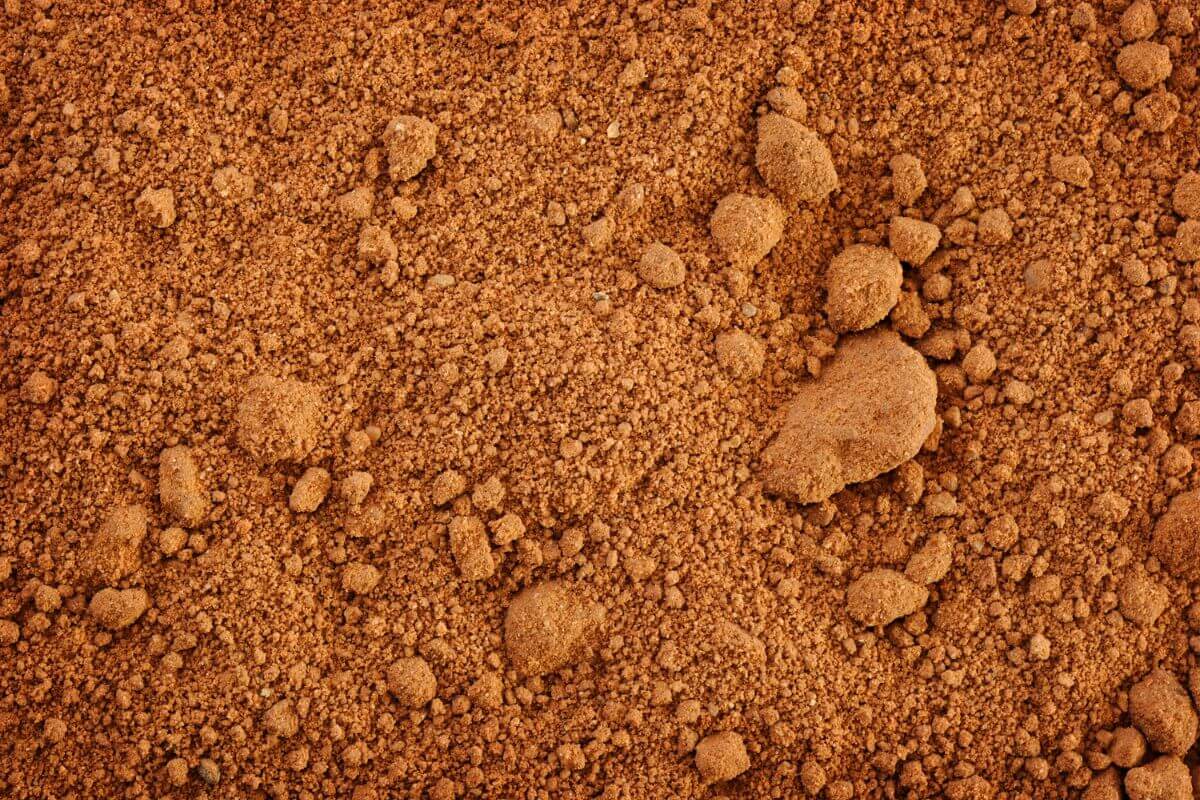
Clay soil is also called “heavy soil.” While this soil is nutrient-rich, it is notoriously hard to work with. This doesn’t mean you should give up if you have clay soil, as you can still get fantastic results.
Clay soil is thick, easily compacted when wet and gets hard and cracks in the heat. In the winter, it stays cool and wet. In the summer, it dries and cracks easily.
Clay Soil Benefits
The minerals in the clay mean this soil is packed full of nutrients.
Clay Soil Drawbacks
Slow to drain, this soil has little to no aeration and plants can find it tough to root.
Clay soil also takes a longer time to warm up in the spring, which hinders germination.
Good Plants for Clay Soil
Trees, perennials, and shrubs can thrive in this type of soil. Ornamental grasses and hydrangeas will also flourish in these soils.
Clay Soil Amendments
Compost is the best amendment for pretty much any soil type. While it is tempting to add sand, the clay particles can stick to the sand, and it can make the soil harder to work with.
Digging in well rotted organic matter creates space between the clay particles and aids drainage.
3. Silt Soil
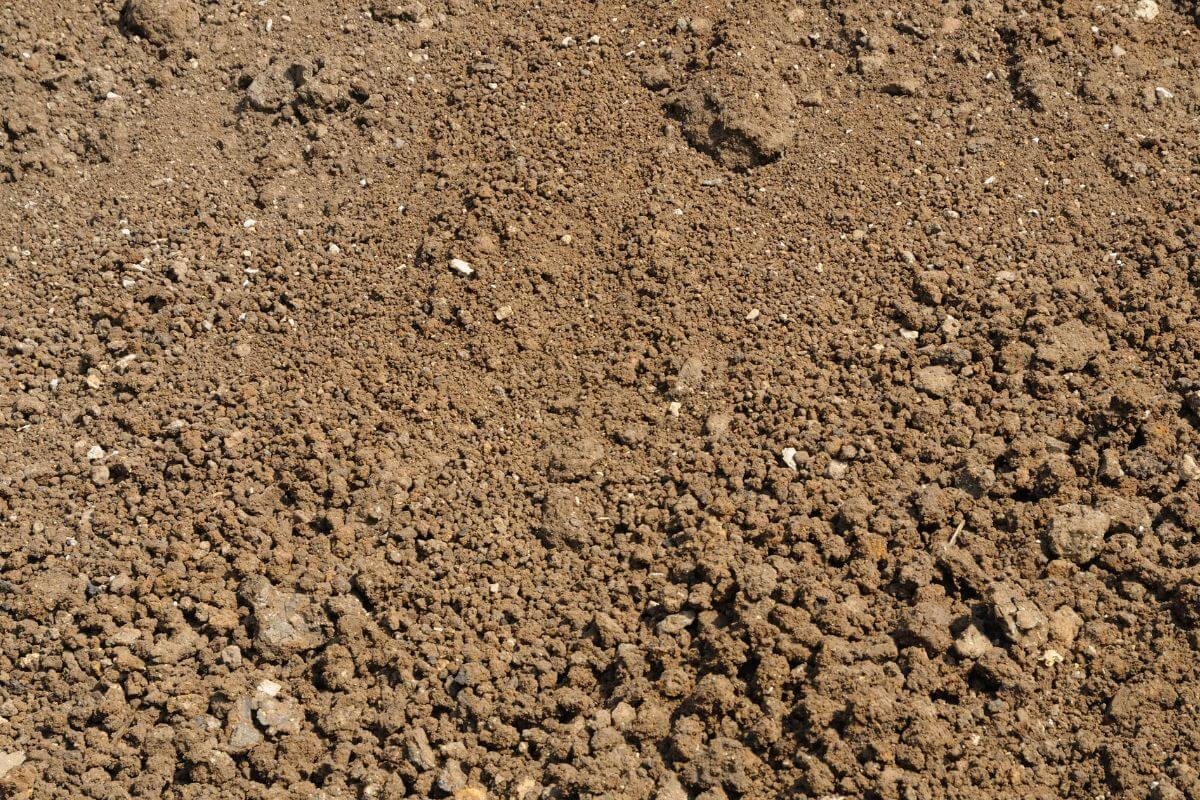
Silt soil feels light and soft. It is made from eroded rock flowing down rivers and breaking up into small silt particles.
Many early farming civilizations blossomed on silt plains that were built near rivers.
Silt Soil Benefits
Silt soil is nutrient-rich, easily worked, and it drains well while still retaining some moisture.
Silt Soil Drawbacks
Silty soil is easily compacted when walked on. It can also be prone to erosion and wash away with rain.
Good Plants for Silt Soil
Vegetables and fruit will do very well in this type of soil. Trees that love moisture, like willows, are suitable, as well as herbaceous perennials, ferns, roses, bulbs and shrubs.
Silt Soil Amendments
As with all the other soils, adding compost will help to stabilize the soil and make it less likely to get washed away.
4. Peat Soil
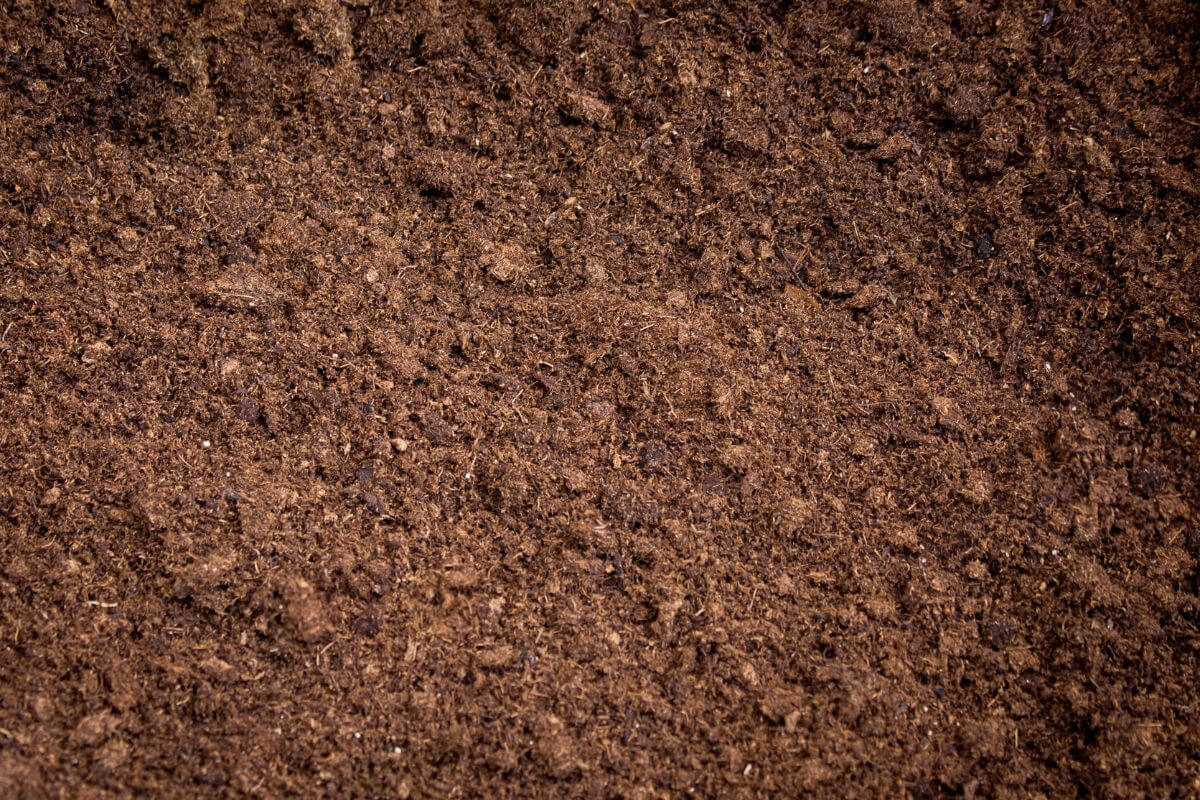
Peat soil is rarely found naturally in gardens. It’s usually brought in by the gardener themselves and mixed in with the garden soil.
It has a lot of organic material, feels spongy and looks dark. Peat is an acidic soil, which slows decomposition.
Peat Soil Benefits
Peat warms up quickly in the spring and retains a lot of moisture.
Peat Soil Drawbacks
Peat is low in nutrients and due to its ability to retain moisture, often needs added drainage.
Good Plants for Peat Soil
Brassicas and salad greens, heather, witch hazel, rhodocenium, mosses, and cotton grasses will all grow in peat.
But in some cases, you may have to add drainage channels to prevent the plants from becoming water logged.
Peat Soil Amendments
Peat soil can actually be great for plants when mixed with compost. You can also use additives like lime and glacial rock to combat the acidity.
5. Chalk Soil
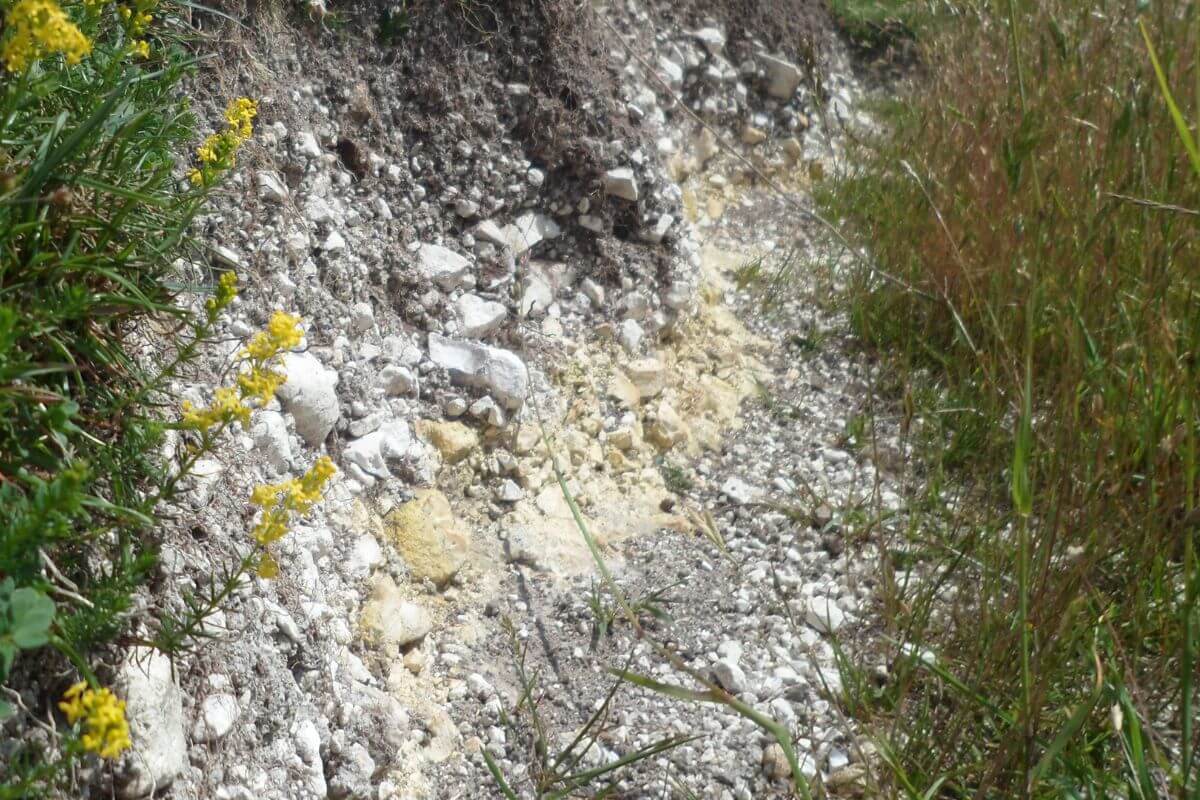
Chalky soil is highly alkaline, but it can be either light or heavy. They are usually larger particles and stonier than other soils, and lie on chalk of limestone bedrock.
Chalk Soil Benefits
Chalk soils are free draining and easy to dig.
Chalk Soil Drawbacks
Chalk soil is alkaline, and so will only support plants that favor alkaline soil. Plants that need acidic soil, like ericaceous plants, won’t be able to grow with chalky soil.
Good Plants for Chalky Soil
Vegetables that will like chalky soil include: cabbage, sweet corn, spinach, and beets.
Trees, shrubs, and bulbs are good to grow, including weigela, lilacs, Madonna lilies, mock oranges, and pinks.
Chalk Soil Amendments
Adding compost will increase the water retention, add nutrients and aid workability. You could also use additives or acidic fertilizers to try and balance out the pH.
6. Loam Soil
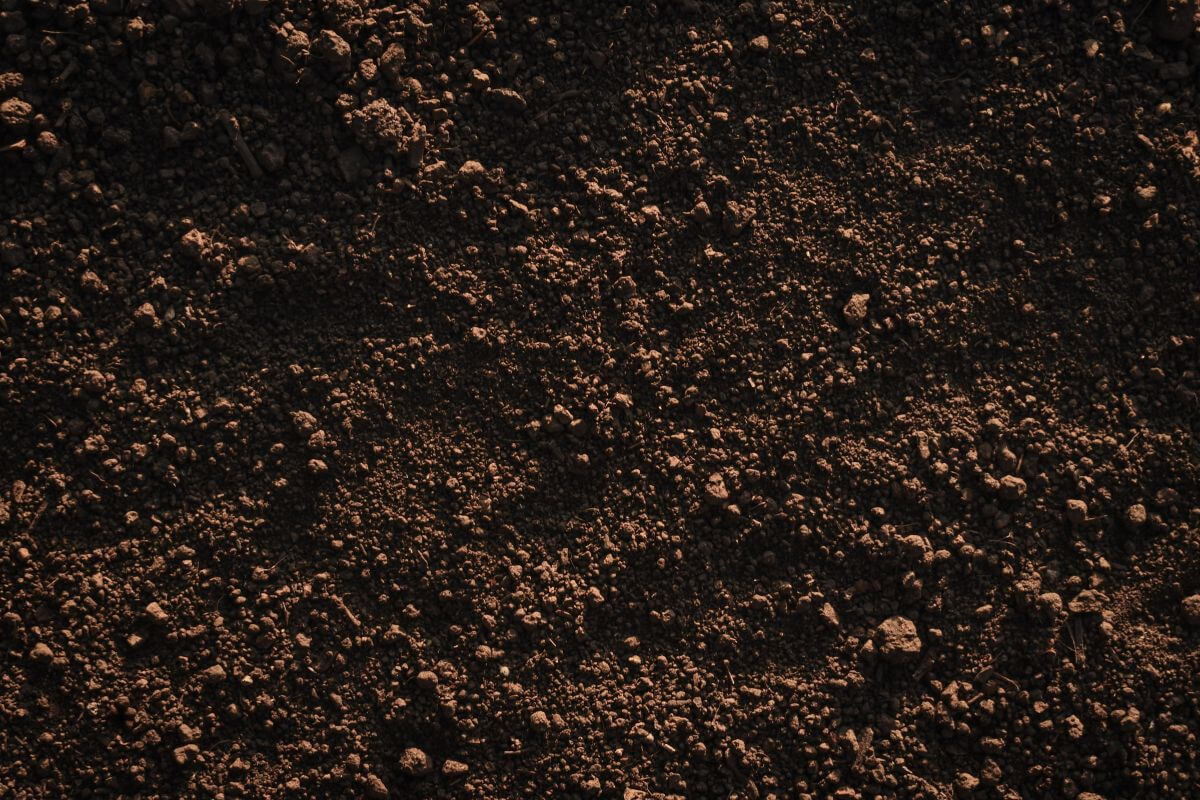
Loam is the holy grail of soils as it’s good for gardens and lawns. It is the perfect mix of sand, silt and clay soil.
The texture is soft and crumbly, yet holds together well enough to allow roots to penetrate deeply into the ground. It feels damp, but not wet, and fine, but not sandy.
Loam Soil Benefits
Loam soil is easy to work with and has good soil structure. It has good drainage, as well as moisture retention.
Loamy soil will easily warm up in the spring, and won’t dry out quickly in the summer. It’s also packed full of nutrients.
Loam Soil Drawbacks
Because loamy soil tends to hold onto more moisture, it can become too wet if not properly managed.
You’ll also be spoiled for choice when it comes to what to grow!
Good Plants for Loamy Soil
Anything. Really.
This kind of soil is ideal for growing vegetables, flowers, trees, herbs, and even houseplants.
Loam Soil Amendments
Just because this soil is the most ideal for plant growth, doesn’t mean it is maintenance free.
You will need to top up the nutrients by adding compost, and it will also benefit from a compost mulch throughout the growing season.
You should also practice crop rotation and consider planting some green manure cover crops to avoid stripping the soil of nutrients and aid moisture retention.
Types of Soil Final Thoughts
It is tempting to think that if you have any soil other than loam, you might as well throw in the towel. However, soil health and quality can be improved over time.
The best and most cost-effective, way to do this is by creating your own compost and digging it into your garden.
You should also keep in mind that plant life flourishes pretty much everywhere on this planet, so you’ll always be able to find what type of plants will grow in your soil.
If you feel like you need some inspiration, ask to see your neighbors’ gardens to find out what they have been able to achieve.
Also, make a note of any wild plants that grow where you live. If any are in abundance, you can always harvest a few seeds to see how they fair in your yard.
Types of Soil FAQs
What are the 6 types of soil?
The 6 types of soil are: Clay, Sandy, Silty, Peaty, Chalky, and Loamy soil. They all differ slightly in their properties, which means each one requires different care.
What are the 3 main types of soil?
The 3 main types of soil are: Sand, Silt, and Clay. They are defined based on particle size. The smaller the particle size, the finer the soil.
What are the 12 different types of soil?
The 12 different types of soil are: Alfisols, Andisols, Aridisols, Entisols, Gelisols, Histosols, Inceptisols, Mollisols, Oxisols, Spodosols, Ultisols, and Vertisols. Each one differs slightly in its characteristics.
What are the 10 types of soil?
What are the 5 types of soil?
The 5 types of soil are: Clay Soil, Silty Soil, Sandy Soil, Peaty Soil, and Loamy Soil. These soils vary in terms of nutrient content, drainage, pH levels, etc.
What are the 4 soil types?
The 4 soil types are sandy soil, clay soil, silt soil, and loamy soil. This information helps us understand why certain plants thrive or fail depending on the soil’s composition.
How do you identify soil type?
You can identify the soil type by observing it and feeling it. You can add water and roll it in your hands. Look at how it appears and feels. What’s the texture like and how is it interacting with the water.
How does my soil affect my plants?
Soil affects your plants through two ways: First, it provides them with food and water; second, it helps regulate temperature within the root zone.
Soils vary greatly depending on location, climate, and parent material. Some soils may contain high levels of minerals while others may lack them entirely. This affects both the amount of nutrition available to your plants and its ability to retain moisture.
How many types of soil does my area have?
Your local climate determines whether or not there are multiple soil types within an area. Some areas may only have 1 type while others could have several. You’ll want to check with your county extension office to get specific information about your region.

